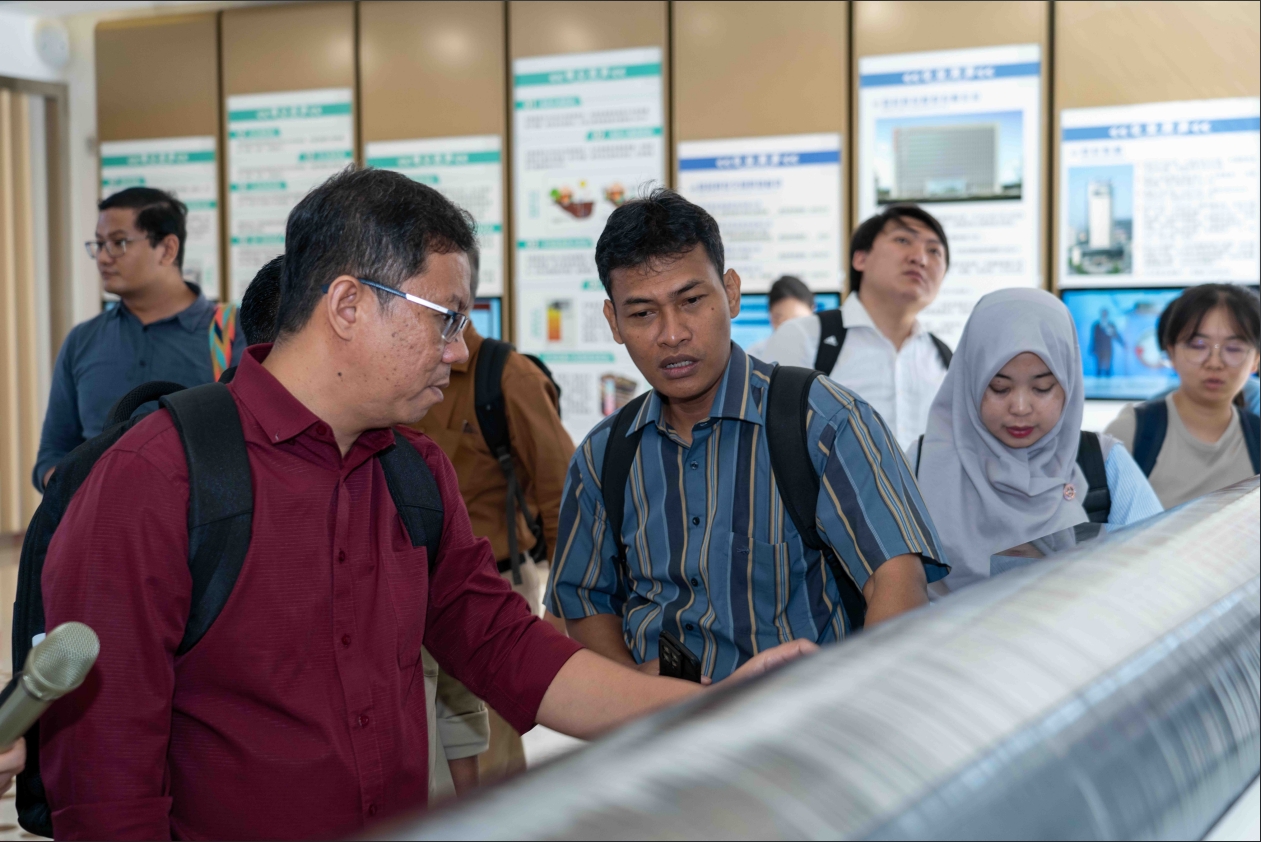Major Chinese and Indonesian Coal Provinces Embark on Transition Cooperation Amid Global Coal Phase-out

(Taiyuan, August 1, 2024)
A special delegation from Indonesia’s largest coal-producing provinces, East Kalimantan and South Sumatra, has wrapped up a three-day visit to Shanxi Province, China’s largest coal producer. Organized by the climate group People of Asia for Climate Solutions (PACS), the trip aims to promote exchanges on energy transition between these major coal economies, with think tanks from both countries signing a memorandum to kickstart a long-term cooperation mechanism.
The delegation visited coal companies, energy companies, renewable energy sites, and low-carbon pilot zones in Shanxi Province. “Energy transition in the world’s largest coal producer is underway,” said Xiaojun Wang, PACS Executive Director.
According to the report "Transition: the Only Option" (hereinafter referred to as the Report) compiled by PACS, the share of the coal industry in the GDP of Shanxi, East Kalimantan, and South Sumatra was 31.7% (2022), 35.1% (2023), and 15.9% (2022) respectively. As 50% to 80% of the coal produced in these areas is shipped domestically or exported internationally, their economies are highly sensitive and vulnerable to fluctuations in the coal market, which is destined to decline in the backdrop of worsening climate change,” Wang said.
More intense and frequent extreme weather events have prompted international consensus on mitigating climate change by phasing out fossil energy as soon as possible. At COP28 in Dubai in 2023, countries committed to “transition away from fossil fuels in energy systems,” marking the end of the era of fossil energy.
Coal burning is the largest single source of GHG emissions that cause climate change, making coal the first type of fossil energy to be phased out on a large scale. “For major coal-producing and coal-dependent places including Shanxi, East Kalimantan, and South Sumatra, the only two available reactions are either early proactive preparation for a coal-free future or passively sitting back and waiting to sink with coal. The latter is hardly an option for anyone wise or responsible,” said Wang Xiaojun, Head of PACS.
China started its energy transition process with the Renewable Energy Law promulgated in 2005 and outlined its priorities in the New Energy Security Strategy formulated in 2014, whose core is “to promote revolutions in energy consumption, supply, technology, and system, and to strengthen all-round international cooperation.” To achieve the goal of “striving to peak carbon dioxide emissions by 2030 and achieve carbon neutrality by 2060,” China is determined to gradually reduce its coal consumption during the “15th Five-year Plan” period.
Shanxi has been positioned as China’s energy revolution laboratory. Shanxi set the target to increase the share of renewable energy installed capacity to 50% by 2025 and 60% by 2030. In 2023, renewable energy accounted for 39.9% of its installed capacity, making Shanxi China’s largest trader in green electricity.
Over a decade into transition, Shanxi has practices and experiences to offer other coal-dependent regions and countries, including Indonesia. Li Ying, a research fellow from Shanxi Coshare Innovation Institute of Energy and Environment and author of the chapter on Shanxi Province in the report "Transition: the Only Option," believes that Shanxi’s efforts in the resettlement and re-employment of affected workers and the restoration of affected land can serve as valuable experience for Indonesia.
Indonesia is the world’s largest coal exporter and the fifth largest GHG emitter. It has pledged to achieve carbon neutrality by 2060 and set a goal to increase the share of renewable energy to 23% by 2025 and reduce GHG emissions by 31.89% by 2030, with a conditional reduction target of 43.2%, subject to international support. In 2022, Indonesia announced that it would join the Just Energy Transition Partnership (JETP), hoping to obtain funding support from developed countries to assist and accelerate its coal phase-out and renewable energy deployment.
“For now, there are still many details to be finalized for the implementation of JETP. However, the model where developed economies provide funding and support for the transition of coal-dependent economies is of great significance,” said Wang Xiaojun. “Besides national efforts coordinated by Beijing, Shanxi also needs support from other ‘brother’ provinces for its energy transition, under a JETB model: Just Energy Transition Brotherhood.”
Places like Shanxi, East Kalimantan, and South Sumatra have realized that coal phase-out is inevitable and irreversible. However, in the absence of external incentives and support, they still lack determination, motivation, and innovation and are therefore trapped in the “resource curse.” Representatives attending the seminar also discussed issues such as the signals for the coal industry’s transition and funding sources. The COP29 to be held in Azerbaijan later this year will focus on climate finance and urge the implementation of climate finance for energy transition and climate adaptation.
At the end of the three-day exchange, PACS and the Shanxi Carbon-Peak-Carbon-Neutral Energy Revolution Research Institute signed a Memorandum of Cooperation with Indonesian think tanks - the Institute for Essential Services Reform and the Energy Shift Institute, for further research and advocacy collaboration on energy transition between the two countries.
“Energy transition is vital for the three provinces and even the two countries. Under the framework of the Memorandum, we will establish closer ties with Indonesian think tanks, deepen our cooperation, and expand non-governmental exchanges, to lay a more solid intellectual foundation for energy transition, forge a stronger friendship for cooperation, and help to channel renewable energy investments,” remarked Cheng Zhang, Chairman of CERR.
